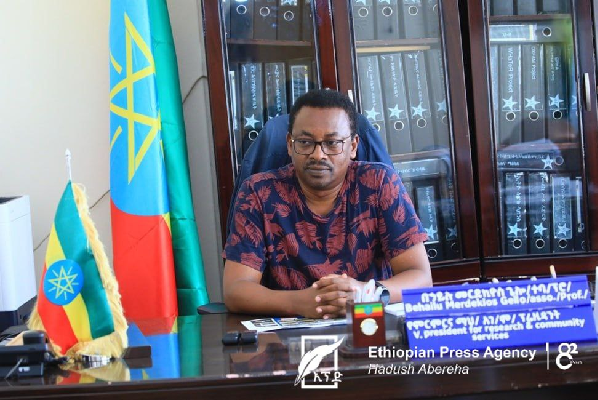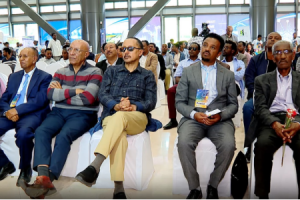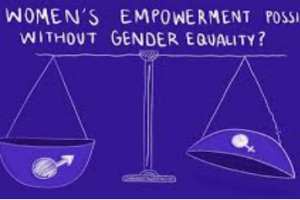
(Part 2)
In a previous article, The Ethiopian Herald evaluated Arba Minch University’s effectiveness in serving the community beyond its primary role of providing quality education. To gain deeper insights, EH spoke with the university president about the institution’s ongoing initiatives focusing on the University’s engagement in the community. In this article, the newspaper turns its attention to Associate Professor Behailu Merdekiows, the Vice President for Research and Community Service, who enthusiastically shared the university’s commitments to community service.
According to Behailu, Arba Minch University, like other higher education institutions, focuses on three key responsibilities: delivering quality education, conducting impactful research, and engaging in community service. Under his leadership in the research section, the university has established a platform known as “Community Joint Cooperation,” which includes a dedicated university-industry interaction research team.
He stressed that the research that has been conducted in the university is going to be supported and encouraged if they focus on synthesizing and scientifically examining the issues of the people around them and if they are attempting to contribute to the country’s developmental policy. He said that the given research in the institute is supposed to invite the interaction of the community since it is aimed at addressing the problems of the community themselves. The logic behind this is that the community should participate in the research process and equally look for solutions. Though some solutions needed scientific way outs, the community should also contribute its indigenous knowledge and cooperate with the study so as to hold the finding as their own. Thus, at a research dissemination workshop, the university invited community representatives who are the subjects in the study.
As per the result of the study, if the finding required the integration of the community with the founded-out theme like agriculture, mining, tourism, or an ICT-related issue, it is moved to the community cooperation wing and the wing activates the community as per the study. If the finding is about technological outreach work, then this result is taken to the university industry cooperation wing. If the case needs technological invention, then the prototype is taken into the community for its checkup. If the result is taken into the community wing, the adaptation to the finding is made practically in front of the community.
Behailu had raised the productive and fruitful research that was made on Enset. Since 10 years ago under this plant lots of research has been done, and technologically advanced solutions have been implemented in the community. Enset in the community is the most loved and respected food. It is rich in minerals. It has the tendency to resist desert conditions, which is gratitude in the society as the most valuable food.
The process of Enset in the community is left out to women and girls to be taken care of. Thus it has been them who tirelessly process the plant till served on the table. Behailu reminded that though the food has been under use since almost 100 years, there has been no research and technology that attempts to decipher the burden of the females and the betterment of the food itself. Women have been effortlessly working on it by scrubbing, squeezing and making ready to be served which had been a very tough process for years. The technology that recognizes this challenge and confides in solving it is one significant concern the research team is exceedingly eager on. Besides the women’s burden, in the process of making this plant into food, the steps and procedures did force it to lose from 25 to 35 % of its amount. The cause of this loss is the cultural process that is meant for fermentation. More than the quantity lost; the process takes a month and/or a month and half. Thus to minimize the fermentation duration and secure its quantity, a scientific and coordinated study has been conducted and a finding that eradicated the mentioned troubles has been applied by the university.
As per the finding, Behailu said, the technology that shifted the 30 to 45 days of fermentation to seven days is confirmed and applied. Scientifically the needed yeast that is required for the plant fermentation is fabricated so that the time taken for the process is made shorter and simple. This technology was taken into the community and got a huge acceptance. In addition the scholars and the responsible bodies from governmental bodies and ministers from Ministry of Technology, Ethiopian confirmative Assessment, Ministry of Agriculture, and House of Peoples Representative had seen the technology and validated and approved it with higher admiration.
In the Ethiopian Intellectual Property Authority the university had registered five innovations. The scientific research that was made on the plant had delivered technology and that technology had solved the community problem at hand. The vice president said that “We built Enset grinder at Dorzie village that processes the plant scientifically. In this grinding hall it is women who take care of the process. Men are there to sculpt the heaviest part of the plant and transport the amount”.
Professor further explained that “the British Christian Aid Organization had asked us to skill and stem the gridding house at Wolayita Sodo. Thus youths formed a union and processed the plant and made powder of it. They are making business by packing its powder to be sold away from their place. Other equivalent institutions also requested the university to have the machine. He said, “We sent a complete machine of this kind to Bonga University and they are working on it effectively. Currently we are disseminating about 100 Enset processing technology to Sidama, Mizan, Dawuro and many more areas of the south west parts of the country.” Since the plant processing culture was taking place in the ground by making deep holes, the newly invented technology had changed this to a pot which is culturally made using mud. Thus science has created job opportunities for those people who made this pot.
Regarding water resources that are surrounding the institute, the university is examining the potential of waterfalls in the area. Thus he said “scientists that are concerned with renewable power research had made a study on the amount and nature of water resources. Thus at Kemba Woreda at Dingamo Kebele, there is a waterfall that has the same amount throughout the year. The scientists studied that the water had the potential to generate around 10 kva. Thus, if it could be damned, it had the capacity to give light for about 400 adults in the area. Thus with this study finding we are in a way to apply it using the aid we get from the Christian Aid. We are completing the construction process and we planted electric poles. We are going to test the function soon.”
The university also invented the natural fertilizer machine. This machine did shorten the three and more month’s fermentation rate for compost fertilizer to only some days. Thus the community is using this technology effectively.
Since Gamo zone is one of the tourist attractive areas of the country, the university had gathered relevant information about the areas to be visited and resting rooms for tourists and uploaded it on web sites for simplifying the process.
Regarding culture, the vice president said that the university is tightly working with the zone’s Culture and Tourism Department to enable the culture of Dubusha to be registered at UNESCO. Moreover, the institute is hardly working on preserving the dying languages and identities of peoples in the region. Generally, Arba Minch University is the shining institute that tangibly assists the national plan of growth and transformation. Thus, institutions could have a lot to imitate from it.
BY MEKDES TAYE (PHD)
THE ETHIOPIAN HERALD THURSDAY 17 OCTOBER 2024





